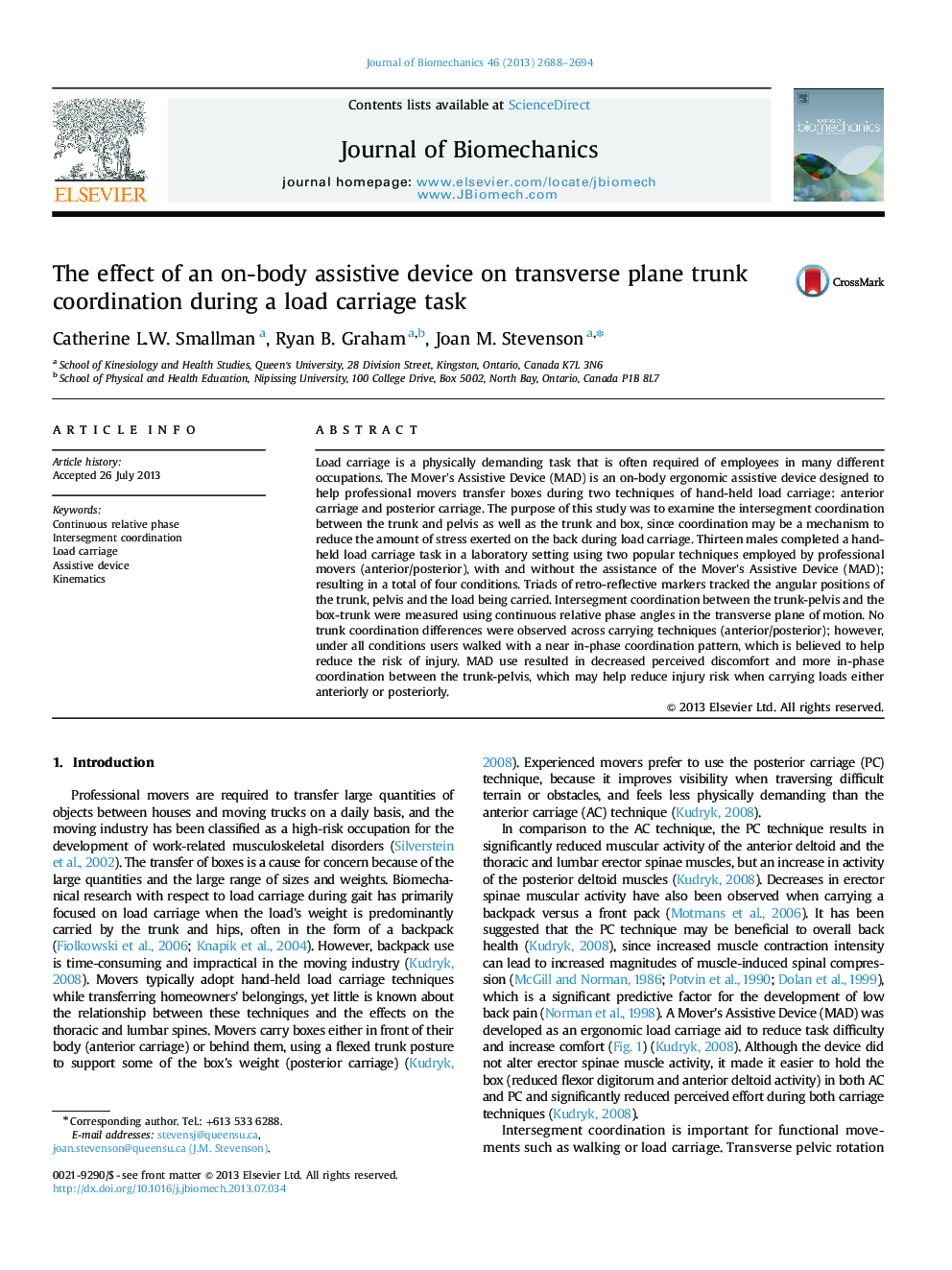| Article ID | Journal | Published Year | Pages | File Type |
|---|---|---|---|---|
| 10432339 | Journal of Biomechanics | 2013 | 7 Pages |
Abstract
Load carriage is a physically demanding task that is often required of employees in many different occupations. The Mover's Assistive Device (MAD) is an on-body ergonomic assistive device designed to help professional movers transfer boxes during two techniques of hand-held load carriage: anterior carriage and posterior carriage. The purpose of this study was to examine the intersegment coordination between the trunk and pelvis as well as the trunk and box, since coordination may be a mechanism to reduce the amount of stress exerted on the back during load carriage. Thirteen males completed a hand-held load carriage task in a laboratory setting using two popular techniques employed by professional movers (anterior/posterior), with and without the assistance of the Mover's Assistive Device (MAD); resulting in a total of four conditions. Triads of retro-reflective markers tracked the angular positions of the trunk, pelvis and the load being carried. Intersegment coordination between the trunk-pelvis and the box-trunk were measured using continuous relative phase angles in the transverse plane of motion. No trunk coordination differences were observed across carrying techniques (anterior/posterior); however, under all conditions users walked with a near in-phase coordination pattern, which is believed to help reduce the risk of injury. MAD use resulted in decreased perceived discomfort and more in-phase coordination between the trunk-pelvis, which may help reduce injury risk when carrying loads either anteriorly or posteriorly.
Related Topics
Physical Sciences and Engineering
Engineering
Biomedical Engineering
Authors
Catherine L.W. Smallman, Ryan B. Graham, Joan M. Stevenson,
